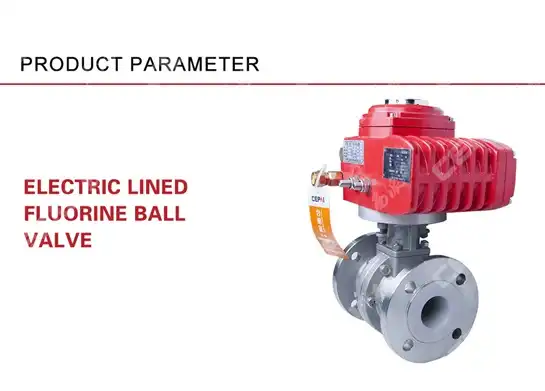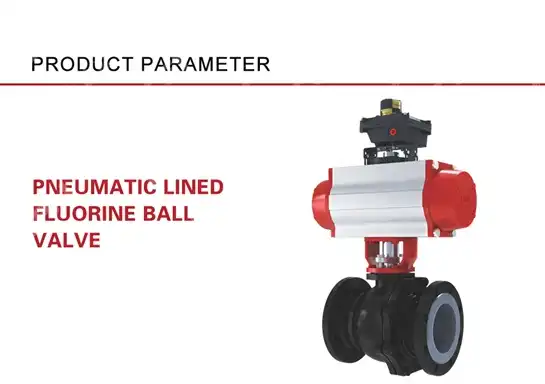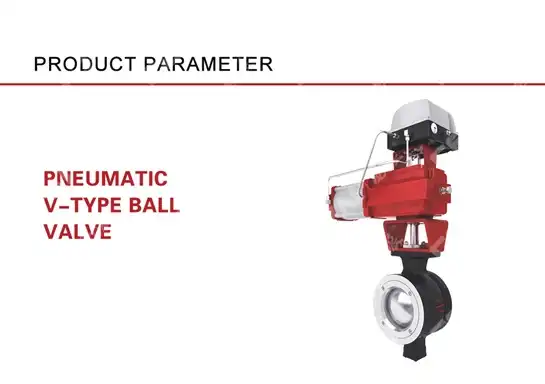Case Study: Using a Ball Valve for High-Pressure Fluid Control
In the demanding world of industrial fluid control, engineers frequently encounter critical scenarios where system failures can result in catastrophic consequences—equipment damage, production shutdowns, and safety hazards that threaten personnel and environmental integrity. When a major petrochemical facility faced recurring pressure spikes and flow instability in their high-pressure processing lines, the solution lay in implementing a properly designed High-Pressure Ball Valve system. This comprehensive case study explores how advanced ball valve technology transforms challenging fluid control applications, demonstrating the critical importance of selecting the right valve solutions for extreme operating conditions where standard equipment simply cannot deliver the reliability and performance required.
Understanding High-Pressure Ball Valve Applications in Industrial Systems
High-pressure fluid control represents one of the most challenging aspects of industrial process management, particularly in sectors such as oil and gas, petrochemicals, power generation, and chemical processing. Steel hydraulic ball valves are suitable for high-pressure applications up to 500 bar (7,250 psi), making them essential components in systems where conventional valves would fail under extreme operating conditions. The selection of appropriate High-Pressure Ball Valve technology becomes critical when dealing with applications that demand both exceptional pressure resistance and precise flow control capabilities. In modern industrial facilities, the complexity of high-pressure systems requires valves that can withstand not only the primary operating pressures but also the dynamic forces generated by pressure transients, thermal cycling, and corrosive media. The engineering challenges associated with these applications extend beyond simple pressure ratings to encompass factors such as flow coefficient optimization, cavitation resistance, and long-term reliability under continuous operation. High-Pressure Ball Valve systems must be designed to handle these multifaceted demands while maintaining consistent performance throughout their operational lifecycle.

-
Critical Design Considerations for High-Pressure Applications
The engineering of High-Pressure Ball Valve systems requires careful consideration of multiple interrelated factors that directly impact performance and reliability. Material selection stands as the primary consideration, with valve bodies typically constructed from high-grade stainless steel alloys such as CF8, CF8M, or specialized materials like WCB that offer superior corrosion resistance and mechanical strength. The ball core design, featuring full diameter O-shaped configurations, ensures optimal flow characteristics while maintaining structural integrity under extreme pressure conditions exceeding 1000 PSI. Sealing performance becomes paramount in high-pressure applications, where even minor leakage can result in significant safety hazards and operational inefficiencies. Advanced O-type sealing ring designs, combined with carefully engineered valve seat materials including PTFE, RPTFE, PEEK, and metal alternatives, provide reliable sealing performance that meets or exceeds ANSI B16.104 Class VI standards. The integration of these sealing technologies with precision-machined surfaces ensures consistent performance across the entire pressure range, from startup conditions to maximum operating pressures.
-
Flow Dynamics and Pressure Control Mechanisms
The fluid dynamics within High-Pressure Ball Valve systems present unique challenges that require sophisticated engineering solutions. Ball valves are primarily designed for on/off applications and may not provide precise flow regulation at high pressures, which has led to the development of specialized designs that address these limitations. Advanced ball valve configurations incorporate V-port geometries and modified flow paths that enhance flow control characteristics while maintaining the robust construction necessary for high-pressure applications. Understanding the relationship between valve opening positions and flow coefficients becomes crucial for optimizing system performance. The mathematical modeling of flow characteristics through High-Pressure Ball Valve systems involves complex calculations that account for pressure drops, flow coefficients, and the potential for cavitation or choked flow conditions. These calculations inform the selection of appropriate valve sizes, actuator requirements, and system integration parameters that ensure optimal performance across the entire operating envelope.
Implementation Strategies for High-Pressure Ball Valve Systems
Successful implementation of High-Pressure Ball Valve systems requires a comprehensive approach that encompasses system design, component selection, installation procedures, and operational protocols. The integration process begins with detailed analysis of system requirements, including maximum operating pressures, temperature ranges, media characteristics, and flow rate specifications. This analysis informs the selection of appropriate valve configurations, actuator systems, and auxiliary components that collectively deliver the required performance characteristics. The pneumatic actuation systems typically employed in High-Pressure Ball Valve applications utilize piston actuators capable of operating across gas supply pressures ranging from 400 to 700 kPa. These actuator systems provide the mechanical force necessary to operate large-diameter valves against high differential pressures while maintaining precise positioning accuracy. The selection of single-action or double-action configurations depends on specific application requirements, including fail-safe positioning, response time requirements, and energy efficiency considerations.

-
Installation and Commissioning Protocols
Proper installation procedures are critical for ensuring optimal performance and longevity of High-Pressure Ball Valve systems. The installation process must account for factors such as pipe stress, thermal expansion, and alignment tolerances that can significantly impact valve operation. Flange-type connections, commonly utilized in high-pressure applications, require precise alignment and appropriate torque specifications to ensure leak-tight performance under extreme operating conditions. Commissioning procedures for High-Pressure Ball Valve systems involve comprehensive testing protocols that verify performance across the entire operating range. These tests include pressure testing to verify structural integrity, leakage testing to confirm sealing performance, and operational testing to validate actuator function and response characteristics. The commissioning process also includes calibration of control systems, verification of safety interlocks, and documentation of baseline performance parameters that serve as reference points for ongoing maintenance programs.
-
System Integration and Control Architecture
Modern High-Pressure Ball Valve systems integrate seamlessly with advanced process control architectures through sophisticated interface systems that provide real-time monitoring and control capabilities. These integration systems typically incorporate position feedback sensors, pressure monitoring devices, and diagnostic systems that enable predictive maintenance strategies and optimize operational efficiency. The control architecture must account for the dynamic response characteristics of High-Pressure Ball Valve systems, including opening and closing times, settling characteristics, and hysteresis effects. The development of intelligent valve systems has revolutionized the operation of High-Pressure Ball Valve applications through the integration of embedded diagnostics, remote monitoring capabilities, and adaptive control algorithms. These advanced systems provide operators with comprehensive information about valve performance, including operating cycles, maintenance requirements, and potential failure modes that enable proactive maintenance scheduling and optimization of system reliability.
Performance Analysis and Operational Benefits
The operational benefits of properly implemented High-Pressure Ball Valve systems extend far beyond simple pressure containment to encompass improvements in process efficiency, safety performance, and maintenance costs. Performance analysis of these systems demonstrates significant advantages in applications requiring reliable shutoff capabilities, minimal pressure drop, and long-term operational stability. The robust construction and advanced materials used in High-Pressure Ball Valve systems contribute to extended service life and reduced maintenance requirements compared to alternative valve technologies. Quantitative analysis of system performance reveals the impact of High-Pressure Ball Valve implementation on overall process efficiency. The low pressure drop characteristics of full-bore ball valve designs minimize energy consumption associated with fluid pumping while maintaining excellent shutoff capabilities. The combination of these factors results in measurable improvements in operational efficiency that often justify the initial investment in high-quality valve systems through reduced energy costs and improved process stability.
-
Reliability and Maintenance Considerations
The maintenance requirements for High-Pressure Ball Valve systems are significantly reduced compared to alternative technologies due to the simple mechanical design and robust construction materials. The absence of complex internal mechanisms minimizes wear points and reduces the frequency of maintenance interventions. When maintenance is required, the straightforward design of ball valve systems enables efficient service procedures that minimize downtime and operational disruption. Predictive maintenance strategies for High-Pressure Ball Valve systems leverage advanced diagnostic capabilities to identify potential issues before they impact system performance. These strategies include vibration analysis, thermal monitoring, and performance trending that provide early warning of developing problems. The implementation of these maintenance approaches has demonstrated significant improvements in system reliability while reducing overall maintenance costs through optimized scheduling and preventive intervention strategies.
Industry Applications and Case Studies
The versatility of High-Pressure Ball Valve technology enables successful implementation across diverse industrial applications, each with unique requirements and operating challenges. In the oil and gas industry, these valves serve critical roles in wellhead applications, pipeline systems, and processing facilities where reliable pressure control is essential for safe operation. The proven performance of High-Pressure Ball Valve systems in these demanding applications has established them as the preferred solution for many critical service applications. Petrochemical applications present additional challenges related to corrosive media, temperature cycling, and process compatibility that require specialized material selections and design modifications. The successful implementation of High-Pressure Ball Valve systems in these applications demonstrates the adaptability of the technology to meet diverse operating requirements while maintaining consistent performance standards. Case studies from major petrochemical facilities document significant improvements in process reliability and safety performance following the implementation of advanced ball valve systems.
-
Power Generation and Utility Applications
Power generation facilities utilize High-Pressure Ball Valve systems in numerous applications including steam systems, cooling water circuits, and fuel handling systems. The demanding operating conditions in these applications, including high temperatures, corrosive environments, and critical safety requirements, necessitate the use of specialized valve designs that incorporate advanced materials and enhanced safety features. The successful operation of these systems has contributed to improved plant reliability and reduced maintenance costs across the power generation industry. Water treatment and municipal utility applications have adopted High-Pressure Ball Valve technology for applications requiring reliable shutoff capabilities and minimal maintenance requirements. The corrosion resistance and long service life of these systems make them particularly well-suited for applications involving treated water, chemicals, and other challenging media. The operational benefits documented in these applications include reduced maintenance costs, improved system reliability, and enhanced operational safety.
Conclusion
This comprehensive case study demonstrates the critical importance of High-Pressure Ball Valve technology in modern industrial fluid control applications. The successful implementation of these advanced valve systems addresses the fundamental challenges associated with high-pressure operations while delivering measurable improvements in safety, reliability, and operational efficiency. The robust design characteristics, advanced materials, and sophisticated control capabilities of modern High-Pressure Ball Valve systems position them as essential components for demanding industrial applications across diverse industry sectors.
Cooperate with CEPAI Group Co., LTD.
CEPAI Group Co., Ltd. stands as a leading China High-Pressure Ball Valve manufacturer with over 15 years of specialized expertise in high-end energy valve manufacturing. Located in Jiangsu Province's advanced manufacturing hub, our state-of-the-art facility spans 56,000 square meters and features the longest high-precision intelligent manufacturing flexible production line in the Asia-Pacific region. As a certified national high-tech enterprise and specialized "little giant" company, CEPAI has earned recognition from major oilfield service companies worldwide, including supplier qualifications from PetroChina, Sinopec, and CNOOC.
Our comprehensive product portfolio includes High Quality High-Pressure Ball Valve solutions designed to meet the most demanding industrial applications. With advanced certifications including API Q1, API 6A, API 6D, and comprehensive ISO management systems, CEPAI delivers exceptional quality and reliability. Our China High-Pressure Ball Valve factory utilizes cutting-edge manufacturing technologies and maintains strict quality control throughout production, ensuring every valve meets international standards for High-Pressure Ball Valve applications.
As a trusted China High-Pressure Ball Valve supplier, CEPAI offers competitive High-Pressure Ball Valve price structures without compromising quality. Our extensive experience serving Fortune 500 companies and major engineering projects positions us as the preferred China High-Pressure Ball Valve wholesale partner for global industrial applications. Whether you need High-Pressure Ball Valve for sale for standard applications or custom-engineered solutions for unique challenges, CEPAI's technical expertise and manufacturing capabilities deliver optimal results.
Contact CEPAI today at cepai@cepai.com to discuss your High-Pressure Ball Valve requirements and discover why industry leaders choose our innovative solutions for their most critical applications.
FAQ
Q: What maximum pressure can High-Pressure Ball Valves handle in industrial applications?
A: High-Pressure Ball Valves can typically withstand pressures exceeding 1000 PSI, with specialized designs capable of handling up to 7,250 PSI (500 bar) depending on materials and construction.
Q: How do High-Pressure Ball Valves compare to other valve types for flow control applications?
A: High-Pressure Ball Valves excel in shutoff applications and offer low pressure drop characteristics, though they may require specialized V-port designs for precise flow regulation in high-pressure systems.
Q: What maintenance is required for High-Pressure Ball Valves in continuous operation?
A: High-Pressure Ball Valves require minimal maintenance due to their simple design, typically involving periodic inspection of seals, actuator lubrication, and performance verification testing.
Q: Which materials are best suited for High-Pressure Ball Valve construction in corrosive environments?
A: Stainless steel alloys such as CF8, CF8M, and specialized materials like WCB provide excellent corrosion resistance, while valve internals may use PTFE, PEEK, or metal seats depending on application requirements.
References
1. "Performance Characteristics of Ball Valves in High-Pressure Compressible Flow Systems" by Zhang, L., Chen, H., and Wang, M., Journal of Flow Control Engineering, 2019.
2. "Cavitation Mechanisms and Failure Analysis in High-Pressure Ball Valve Applications" by Smith, R.K., Johnson, A.B., and Davis, C.L., International Journal of Pressure Vessel Technology, 2024.
3. "Design Optimization for High-Precision Linear Regulating Ball Valves" by Liu, X., Anderson, P.J., and Thompson, K.R., Mechanical Engineering Research and Development, 2024.
4. "Fluid Dynamics Investigation in Large-Diameter Ball Valves for Natural Gas Pipeline Applications" by Rodriguez, M.A., Brown, S.E., and Wilson, J.D., Applied Sciences in Energy Systems, 2023.

Get professional pre-sales technical consultation and valve selection services, customized solution services.

About CEPAI


